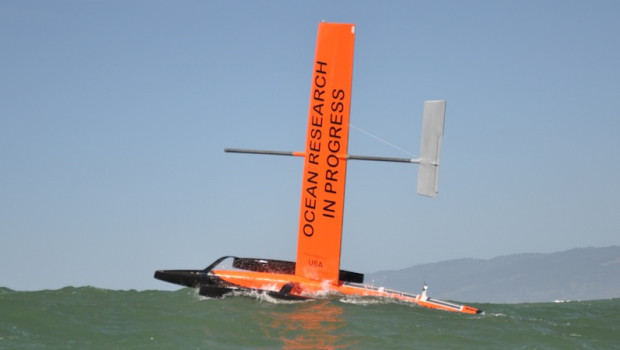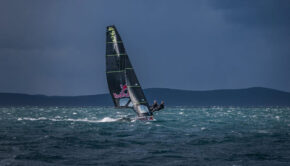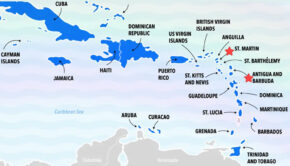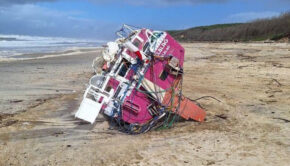Saildrone: New World Record for Autonomous Sailboat
Published on November 17th, 2013
An unmanned and autonomous vessel relying solely on wind power is not a new concept. But demonstrating significant success is new, and Saildrone 1 (SD1) has done that.
SD1 is powered by a solid, freely rotating wing that is controlled by a tail. This concept was evolved over a ten year period for the Greenbird project by Richard Jenkins, Saildrone CEO and co-founder. Greenbird currently holds the world speed record for wind-powered vehicles at 126.2 mph.
Here is the timeline of accomplishments from San Francisco, CA:
February 5, 2013: SD1 completed the first formal milestone. This was the culmination of many months of engineering, building and programming, but the results were very impressive, with SD1 operating perfectly in the challenging light winds. This milestone consisted of fully autonomous operation, waypoint delivered & telemetry returned via satellite, 5 km traveled, more than 10 waypoints achieved, and more than 2 hours uninterrupted autonomous operation.
March 20, 2013: SD1 set a new world record for autonomous sailboats in the process. Sailing fully autonomously (but monitored), SD1 covered 154 miles in 67 hours, before sailing itself back to the dock where it started, in perfect condition. Sailing laps of a course in South Bay (San Francisco), SD1 encountered a very wide array of conditions from no wind and strong tides, to a steady wind of 25 knots, gusting 28. Top Speed was 8.4 knots; best average speed over 10km was 5.2 knots.
May 27, 2013: SD1 successfully completed the first autonomous circumnavigation of the Farallon islands. Laying 30 miles offshore from San Francisco, the Farallones marine sanctuary is not only an area of special scientific interest, but is also a formidable sailing route and is well known for its often treacherous conditions near the islands. SD1 departed from a dock in Alameda, on the east side of San Francisco bay. From there it navigated itself out through the strong tides and winds of San Francisco bay, under the Golden Gate Bridge and into the Pacific. After 48 hrs and 100 miles it returned to the same dock, after sailing around the islands, without any human intervention.
August 13, 2013: SD1 returned to California from its first long deployment in the pacific. The rough destination was Hawaii, but about 2 weeks into the voyage and approximately 1000 miles offshore, an anomaly was detected in one of the encoders, and it was decided to turn SD1 around for repair. Twenty-seven days after deployment, SD1 returned to Santa Cruz under its own power. It had covered 2100 miles during the deployment.
November 4, 2013: With big seas outside the Golden Gate, SD1 was deployed on October 1, directly into a gale. A small craft advisory and gale warning had been issued by NOAA. Over the next five days, SD1 covered 650 miles in winds gusting to 35 knots. The destination was Hawaii, a journey of 2100 nautical miles. SD1 arrived in Kaneohe, Hawaii, 34 days after leaving San Francisco. This accomplishment sets a new world record for an autonomous sailboats as well as being the first unmanned and autonomous vessel to cross an ocean using wind power.
Project website: http://saildrone.com









 We’ll keep your information safe.
We’ll keep your information safe.